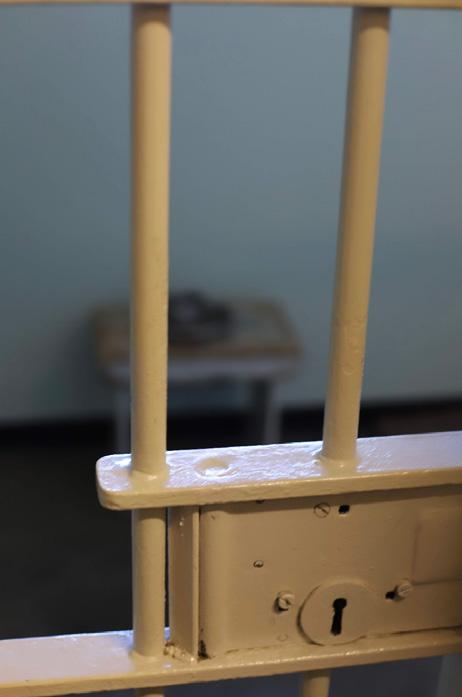
2 minute read
STREETZine
Offering financial opportunity to homeless and economically disadvantaged individuals.
STREETZine is a program of The Stewpot and a member of International Network of Street Papers
Suggested donation to a vendor with a badge: $1.00 or more - La donación sugerida a un vendedor con insignia: $1.00 or more
Transitioning Back Into Life
By Wendy Rojo
Life looks different to each of us. We all live our lives together, but we experience life differently. We take various paths in hopes of doing the best we can with what we have.
Unfortunately, we make mistakes, but it is how we amend those errors that truly matters. For some in our community, that means serving time. According to Dallas County, there are roughly 6,000 people currently in our jail system.
Unfortunately, we make mistakes, but it is how we amend those errors that truly matters.
Regardless of the reason a person is incarcerated, it is important to acknowledge the effects incarceration can have on them. The Prison Policy Initiative (PPI) argues that many features of incarceration lead many to experience mental illness. The features PPI mention include disconnection from family, loss of autonomy, boredom, lack of purpose, and unpredictability of surroundings. PPI states that many who are incarcerated can experience a post-incarceration syndrome similar to posttraumatic stress disorder.
The impact of incarceration affects everyone equally. However, some people have a greater chance of being incarcerated. According to the Texas Center for Justice and Equity, people experiencing homelessness are 11 times more likely to be incarcerated compared to the general public. They also report that incarcerated individuals are 10 times more likely to be homeless compared to the general population.
Those who are experiencing homelessness are statistically more likely to face incarceration and the effects of being incarcerated can hit them harder. As the Texas Center for Justice and Equity states, a national survey found that those who are homeless reported the use of mental health services and/or medication prior to being incarcerated. Furthermore, those who were homeless before incarceration are two times more likely to be exposed to trauma.
Those who are experiencing homelessness are statistically more likely to face incarceration and the effects of being incarcerated can hit them harder.
Experiencing the effects of incarceration is difficult enough, but thinking about life after incarceration can create its own set of obstacles. For many, it can be difficult getting back into the general population and simply getting back to living. Luckily, some organizations are leading the way in helping those who were incarcerated get over the obstacles.
Unlocking Doors, for example, created a reentry brokerage process that helps those with a criminal background get back into society. Their process includes client enrollment, a reentry plan, and monitoring and impact measuring. The data they find is used to inform policy and legislative efforts. Their goal is to reduce repeat crimes by 20% among their clients. This is done by tailoring each process to a client’s needs.
Similarly, the 2000 Roses Foundation focuses on assisting women re-enter society following incarceration. The organization particularly focuses on helping women who are affected by substance abuse and/or domestic abuse. The 2000 Roses Foundation has an online catalog of items created by some of these women that are available for purchase.
These organizations are just a couple that are helping those who have been incarcerated. Both organizations see the value of creating hands-on occasions so clients can learn new skills and have a greater chance of reentering society successfully.
Wendy Rojo is managing editor of STREETZine.
Facts to Know about Homelessness and Incarceration
“The rate of homelessness among adult state and federal prison inmates is four to six times the annual rate of homelessness in the general population.”
Source: Texas Center for Justice and Equity
“Homelessness does not increase the risk of incarceration. In contrast, incarceration does increase the probability that an individual will become homeless, but not immediately.”
Source: Journal of Quantitative Criminology
“The critical period for ex-inmates starts six months after release suggesting that this may be the time when support programs are currently lacking and would be most efficient.”
Source: Journal of Quantitative Criminology





